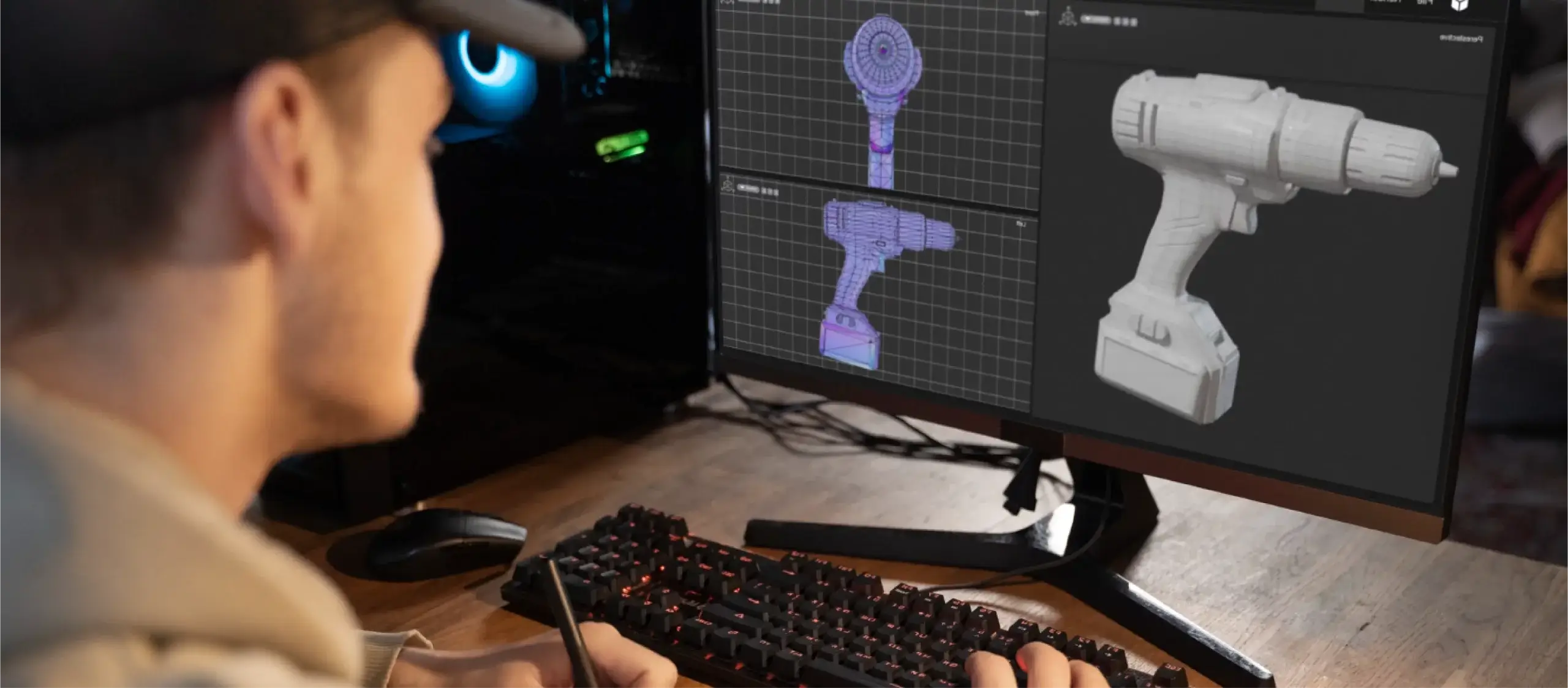
What is a registered design?
A registered design protects the overall appearance of the whole or part of an article which result from the unique shape, lines, contours, colour, texture, materials and/or ornamentation of that article. It is an effective form of intellectual property protection that can prevent others copying a design in the country or region for which the design has been registered.
What is the maximum term of a registered design?
The maximum term of a registered design varies across different countries and regions. For example, a UK or Community registered design lasts for a maximum of 25 years, subject to renewable fees being paid every 5 years, whereas a US registered design (known as a ‘design patent’) lasts for a maximum of 15 years and is not subject to renewal fees.
What are the key requirements to be granted a registered design?
The key requirements to be granted a registered design in most major jurisdictions are that the design must be new and have ‘individual character’ compared to already known designs regardless of their technical application and function.Some countries and regions, such as the UK and the EU, provide a 12-month grace period in which we can still validly file a registered design application for a design which has been publicly disclosed within a year before filing the application. However, other countries, such as China, do not provide such a grace period and instead operate on an absolute novelty requirement meaning a design application must be filed before the design is first disclosed. Therefore, if you are interested in protecting a design in any countries that may not provide a novelty grace period, it is vital we first file a UK design application before any disclosure of the design to ensure your rights to seek design protection overseas are not prejudiced.
Do we need to register our designs?
No, but if your designs are not protected by a registered design, you may only have unregistered rights, such as copyright, to rely upon if you wish to take action against an alleged infringer. However, unregistered design rights are narrower in scope than registered designs and relying on copyright alone, for example, is relatively unpredictable, often involves the Courts, and can be particularly costly. A registered design on the other hand clearly defines the scope of protection conferred, provides an official date of filing and registration which can be relied upon, and includes ownership details, etc.
Registering your designs also acts as an effective deterrent to potential copiers, shows your competitors you value your IP, adds value to the company, helps sales and marketing, and can create a separate revenue stream in the form of licensing, etc.
Do we need a designs attorney to help us with this?
Anyone can file a UK registered design application. However, just like for the claims of a patent application, it is vital the type and form of the drawings (known as ‘representations’) are correct and accurately define the scope of design protection being sought. The well-known ‘Trunki’ case (Magmatic v PMS International Ltd.) that was decided on appeal at the UK’s Supreme Court showed how important it is to fully consider the scope of protection being defined by the drawings (or in this case, computer generated images) of a registered design application to avoid unintentionally over-limiting the scope of protection conferred by the registered design and, in turn, allowing a third-party to avoid infringement.
How much does it cost to register a design in the UK?
The cost to file a UK registered design application for a single design is around £550-950 depending on the suitability of the drawings provided. We work closely with independent illustrators who can prepare suitable drawings if needed. Typically, assuming no objections are raised by the design examiner, the only other minimal cost after filing the application is for reporting the registration certificate to you. Renewal fees are then payable every 5 years to keep the design registration in force for the maximum 25 years, if desired.
Additional costs will be incurred if any foreign registered design applications are filed to seek registered design protection for the same design overseas. The period in which to file any foreign design applications based on an earlier-filed UK design application for the same design is six months.
We would be happy to help. We can work with you to determine the scope of protection your design rights confer on an alleged infringer and then confirm, in our opinion, whether or not an infringement has taken place. We can then advise how best to proceed to enforce your rights on the alleged infringer. At that point, we may bring an IP solicitor onboard who we work closely with, particularly if the matter becomes litigious.
We certainly can. We will work with you to determine, in our opinion, whether or not an infringement has occurred and then advise how best to proceed.

Our Registered Design Services
Our specialists design attorneys can assist you in the following ways:
- Prepare and file registered design applications in the UK and overseas via our well-established network of secure and trusted foreign attorney firms;
- Manage new or existing registered design portfolios, such as monitoring renewal fee deadlines and attending to renewal fee payments, recording changes of ownership, address, etc.;
- Assist you to successfully enforce your design rights against an alleged infringer;
- Carry out infringement and validity analyses to determine if you infringe a third-party design right and/or if the third-party design right was validly registered and therefore even enforceable;
- Perform freedom to operate (FTO) searches and analyses to determine whether or not the registered design landscape is clear before launching a new product in a particular country or region;
- Prior art searches and analyses to determine the registrability of a design;
- Support in-house legal teams in relation to their registered design matters; and
- Due diligence of a seller’s IP portfolio to support a potential corporate acquisition.
![]()
Your Design Rights Team
If you would like to find out more about protecting or enforcing your design rights, please do get in touch – we would be delighted to speak to you.
Contact usClient Testimonials
We value our clients and what they say about us.
FAQs
A design right is an intellectual property right that prevents others commercially benefitting from a design you own without your consent. A design right may be an automatic right, such as copyright or unregistered design rights, which automatically provides protection for the design owner as soon as the design has been created, e.g. when manually drawn on a piece of paper using a pencil, when digitally drawn on a computer using CAD software, or when formed by an injection moulding machine. Alternatively, the design right may be a registered design which requires an application to be officially filed at an Intellectual Property Office and the design to be accepted and registered, typically after at least a formalities examination.
The well-known glass Coca-Cola bottle is particularly unique in appearance and does not require the company name or logo to be present for the average consumer to readily realise the bottle is a Coca-Cola bottle from the shape and contours of the bottle alone. This consumer association between the physical appearance of the bottle and the company is particularly valuable to Coca-Cola and was therefore protected across many territories, alongside the brand name and logos (registered trade marks) and the recipe (trade secret).
A wide range of designs can be protected by way of filing a registered design application, such as 2D designs, 3D designs, components of complex products which are visible in use, and industrial products whose aesthetics are irrelevant. Some designs, such as logos, may also be protectable by a registered design which can act as an additional or alternative form of protection to registered trade marks.
A registered design must be new and have individual character. A design is considered new if it has not already been publicly disclosed or if a similar design which has already been disclosed differs more than ‘immaterially’. A design is considered to possess individual character if it produces a different overall impression on an informed user compared to that produced by a previous known design. The degree of freedom of the designer is taken into consideration when assessing individual character and therefore the requirement for individual character is more subjective compared to that of novelty.
Yes, possibly. If the design was first made available to the public within the last 12 months, we may still be able to file a registered design application to protect that design in the UK. Other countries and regions also provide a similar grace period in which to still validly filed a registered design application for a disclosed design, such as Europe and the US. Our design attorneys can advise accordingly but time may be of the essence, so please get in touch sooner rather than later.
The rights to a registered design originally vest with the designer, subject to an agreement to the contrary. For example, if the design has been created during the course of the designer’s employment, the ownership rights may, depending on national law, have been automatically transferred to the employer, i.e. the company, who would then be the legally entitled applicant of a registered design application for that design. It is therefore vital the chain of title is correct and complete before a registered design application is filed. Our design attorneys can advise accordingly.
Get in touch
Please do pick up the phone, drop us an email, or request a callback. We look forward to hearing from you.



